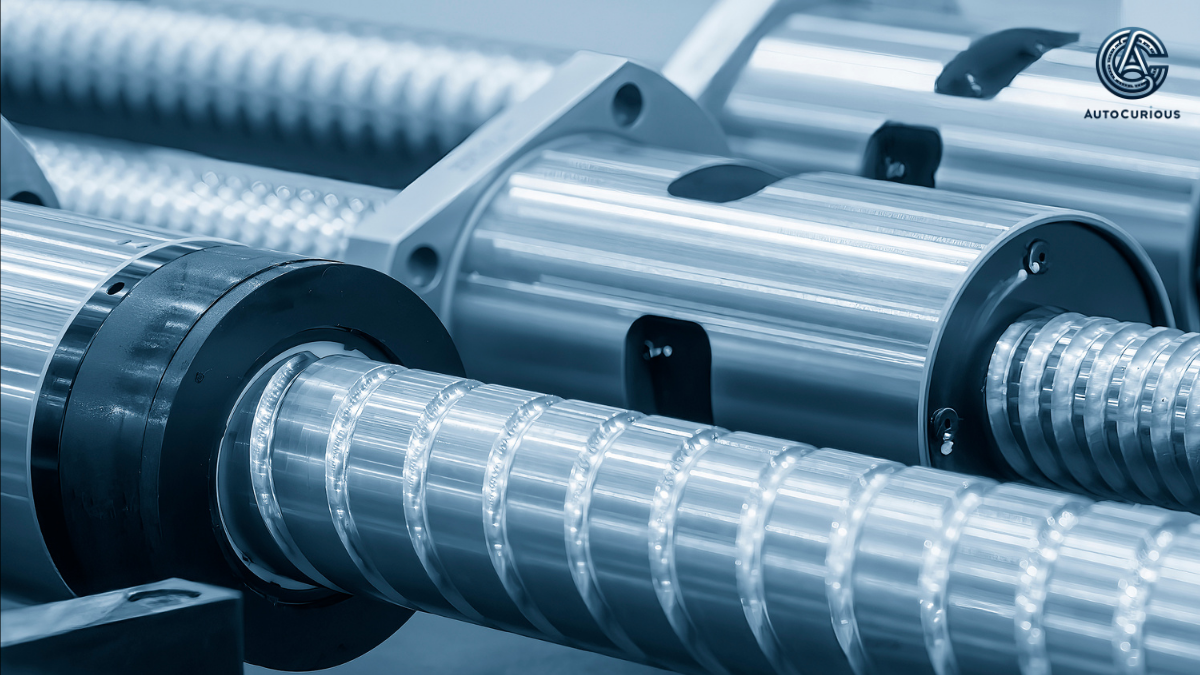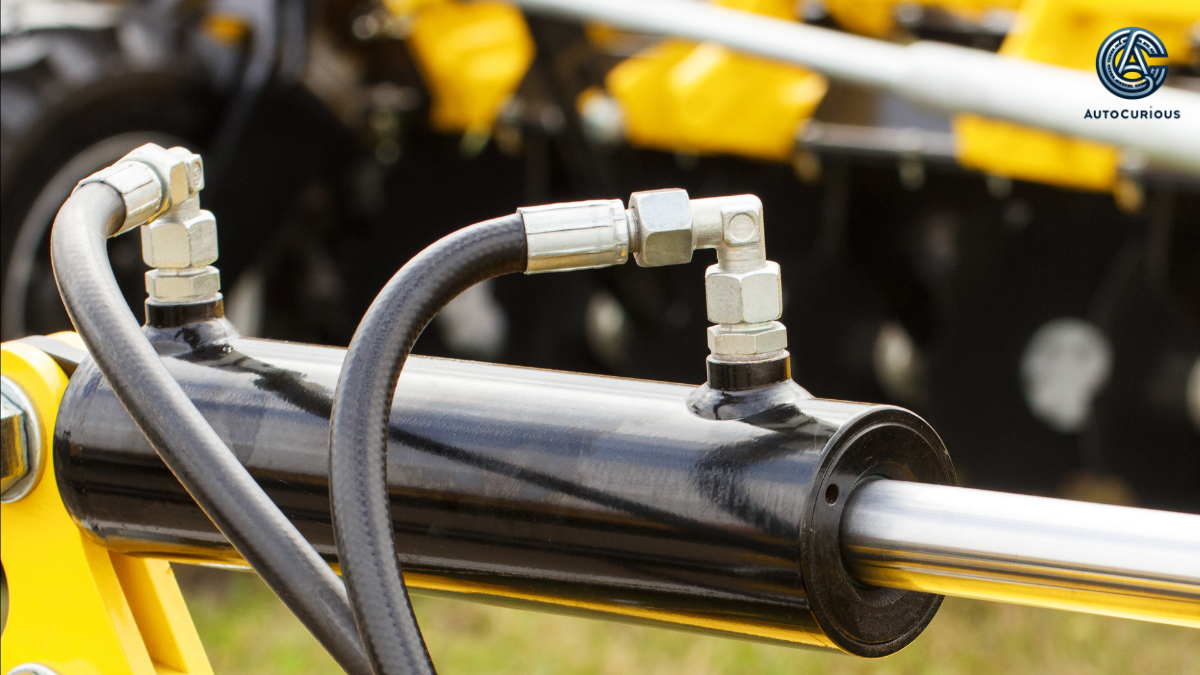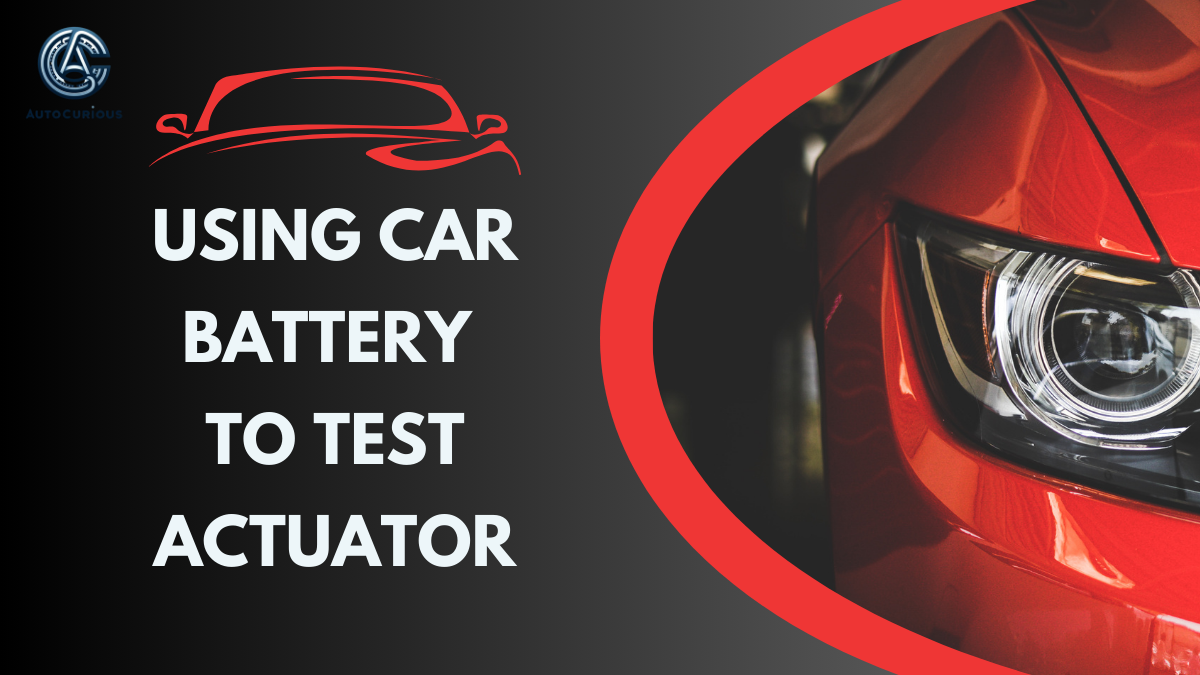Using Car Battery to Test Actuator
Introduction
When it comes to maintaining your vehicle, ensuring that all components are in good working order is crucial. One such component is the actuator, a small but vital part that helps control various systems within your car. But how do you know if an actuator is functioning correctly? One straightforward method is by using your car battery to test the actuator. In this guide, we’ll explore everything you need to know about testing an actuator with a car battery, from the basics to the step-by-step process.
Table of Contents
ToggleWhat is an Actuator in a Vehicle?

An actuator in a vehicle is a device responsible for moving or controlling a mechanism or system. These tiny motors convert electrical energy into mechanical movement, enabling various functions such as opening and closing valves, adjusting seats, and controlling the throttle. Actuators are found in several parts of your vehicle, including the HVAC system, fuel injection system, and even the power locks.
Types of Actuators in Cars:
- Throttle Actuators: Control the throttle body, affecting acceleration.
- HVAC Actuators: Regulate airflow and temperature within the cabin.
- Door Lock Actuators: Operate the locking mechanisms of the car doors.
Actuators play a critical role in the smooth operation of your vehicle, making it essential to ensure they are always in top condition.
Why Test an Actuator?
Testing an actuator is crucial for several reasons. Over time, actuators can wear out or become faulty, leading to various issues in your vehicle. Common signs of a faulty actuator include unusual noises, erratic performance, or complete failure of the system it controls.
Ignoring actuator problems can lead to more severe issues, such as poor vehicle performance or even safety hazards. Early detection through testing allows you to address these issues before they escalate, saving you time and money in the long run.
Tools and Equipment Needed
Before you begin testing an actuator, you’ll need to gather a few essential tools. The most important item on your list is a car battery, which will serve as the power source for your test.
Tools Needed:
- Car Battery: Provides the necessary power for testing the actuator.
- Wires with Alligator Clips: For connecting the battery to the actuator.
- Multimeter (Optional): For measuring voltage and ensuring proper connections.
- Protective Gloves: To safeguard your hands during the process.
- Safety Goggles: To protect your eyes from any potential sparks.
Safety Precautions:
- Always wear protective gear.
- Ensure the car battery is fully charged.
- Work in a well-ventilated area to avoid inhaling fumes.
Step-by-Step Guide to Using Car Battery to Test Actuator

1. Preparing Your Workspace:
Start by ensuring your workspace is clean, well-lit, and free from any flammable materials. Lay out all your tools within easy reach.
2. Disconnecting the Actuator:
Before you can test the actuator, you’ll need to disconnect it from the vehicle’s system. This may involve removing screws or clips, depending on the actuator’s location.
3. Connecting the Actuator to the Car Battery:
Using wires with alligator clips, connect the positive terminal of the car battery to the positive terminal of the actuator. Then, connect the negative terminal of the battery to the negative terminal of the actuator.
4. Observing the Actuator’s Response:
Once the connections are secure, observe the actuator for any movement or sound. A functioning actuator will respond immediately, either by moving or making a noise indicating it’s operating correctly.
5. Analyzing the Results:
If the actuator responds as expected, it’s likely in good working order. However, if there’s no response or if the actuator moves sluggishly or erratically, it may be time for a replacement.
Interpreting the Test Results
Understanding the results of your test is crucial. A positive response, such as smooth movement or an appropriate noise, indicates that the actuator is functioning correctly. However, if the actuator doesn’t respond or behaves abnormally, it’s a sign of a malfunction.
In such cases, you may need to further diagnose the issue or consider replacing the actuator. If you’re unsure of the results, consulting with a professional mechanic can provide additional clarity.
Common Issues When Testing Actuators
Testing actuators isn’t always straightforward. Common issues include poor connections, a weak battery, or an actuator that’s too damaged to respond. Troubleshooting these problems involves checking your connections, ensuring the battery is fully charged, and verifying that the actuator is receiving power.
If you continue to experience issues, it may be worth testing the actuator with a different battery or using an alternative method.
Alternatives to Using a Car Battery for Testing
While using a car battery is a convenient method, there are alternatives that some prefer. Professional diagnostic tools can offer more detailed insights into actuator performance, while a multimeter can provide precise voltage measurements.
Each method has its pros and cons. Using a car battery is quick and straightforward, but professional tools may offer more comprehensive diagnostics. Consider your needs and available resources when choosing the best method for testing.
When to Replace an Actuator
Sometimes, testing will reveal that an actuator is beyond repair. Signs that you need to replace an actuator include complete non-responsiveness, significant wear, or visible damage. When replacing an actuator, consider the cost and quality of the replacement part.
Choosing the right replacement actuator is crucial. Ensure it matches the specifications of your vehicle to avoid compatibility issues.
How to Maintain Actuators to Avoid Future Issues
Preventing actuator problems is better than fixing them. Regular inspections can help you catch issues early. Cleaning and lubricating actuators can prevent wear and tear, while ensuring your battery is in good condition can avoid power-related issues.
Routine maintenance of your vehicle’s electrical system can also extend the life of your actuators, reducing the need for frequent testing and replacements.
Safety Tips for Testing Actuators
Safety should always be a priority when working with electrical components. Handle the car battery carefully, avoid short-circuiting the connections, and protect sensitive electrical parts from damage. If something goes wrong during testing, such as sparks or smoke, disconnect the battery immediately and reassess the situation.
Common Mistakes to Avoid
When testing actuators, it’s easy to make mistakes. Common errors include misidentifying the actuator issue, incorrectly connecting the battery, or overlooking safety precautions. Avoid these pitfalls by double-checking your work, following instructions carefully, and prioritizing safety at all times.
How do you install another battery for car audio? | 10 Simple Steps
Tips for Extending Car Battery Life | 10 Best Tips
Frequently Asked Questions About Testing Actuators with a Car Battery
Can Any Car Battery Be Used?
Yes, most car batteries are suitable for testing actuators, but ensure it’s fully charged and in good condition.
What Voltage Should I Expect?
You should typically expect around 12 volts from a standard car battery. However, check your vehicle’s specifications to be sure.
How Long Should the Test Take?
The test should only take a few minutes. If the actuator doesn’t respond quickly, it may be faulty.
The Importance of Regular Vehicle Maintenance
Regular maintenance is key to keeping your vehicle in top condition. Actuators, like other components, benefit from regular testing and upkeep. By incorporating actuator checks into your maintenance routine, you can prevent issues before they affect your vehicle’s performance.
Car Battery Keeps Dying? | Causes and What To do?
AGM Battery | Ultimate Guide to Absorbent Glass Mat Batteries
Conclusion
Testing actuators using a car battery is a simple yet effective way to ensure they are functioning correctly. By following the steps outlined in this guide, you can diagnose issues early and take the necessary actions to maintain your vehicle’s performance. Regular maintenance and testing not only extend the life of your actuators but also contribute to the overall health of your vehicle.
What Dia is 3 Gauge Car Battery Cable
What Dia is 4 Gauge Car Battery Cable
Solar Powered Car Battery Charger
What dia is 7 Gauge Car Battery Cable?
Battery Discharge Warning | Causes and What to do?
FAQs
No, testing an actuator with a car battery is safe as long as the connections are made correctly and the battery is in good condition.
If the actuator doesn’t respond during testing, it’s likely faulty. However, if you’re unsure, further diagnostic tests may be necessary.
If there’s no response, check your connections and battery. If the problem persists, the actuator may need to be replaced.
If you’re comfortable with car repairs, replacing an actuator yourself can save money. Otherwise, a mechanic can ensure the job is done correctly.
Actuators should be tested if you notice performance issues or during regular vehicle maintenance, typically every 6-12 months.

1 thought on “Using Car Battery To Test Actuator”